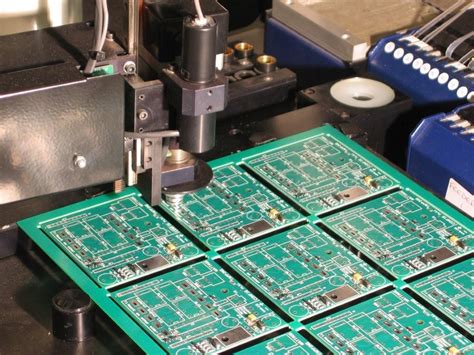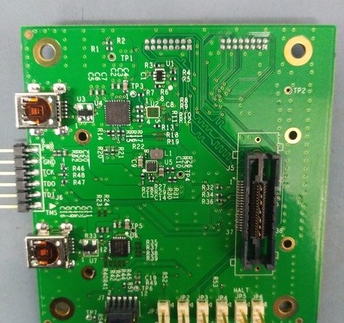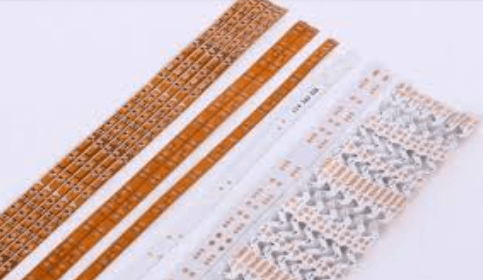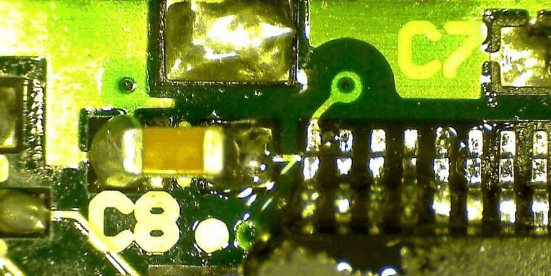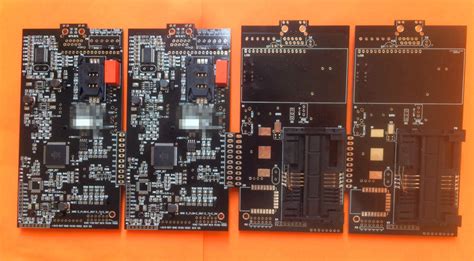Ceramic pcb thermal conductivity
Understanding The Thermal Conductivity Of Ceramic PCBs
Ceramic printed circuit boards (PCBs) have emerged as a pivotal component in the realm of electronics, particularly in applications demanding high thermal performance. Understanding the thermal conductivity of ceramic PCBs is essential for engineers and designers who aim to optimize the thermal management of electronic devices. As electronic components become increasingly powerful, the need for efficient heat dissipation becomes more critical. Ceramic PCBs, known for their superior thermal properties, offer a viable solution to this challenge.
The thermal conductivity of a material is a measure of its ability to conduct heat.
In the context of PCBs, high thermal conductivity is desirable as it facilitates the efficient transfer of heat away from heat-generating components, thereby enhancing the reliability and longevity of the device. Ceramic materials, such as aluminum oxide (Al2O3), aluminum nitride (AlN), and beryllium oxide (BeO), are commonly used in the fabrication of ceramic PCBs due to their excellent thermal properties. Among these, aluminum nitride is particularly noteworthy for its high thermal conductivity, which can exceed 170 W/mK, making it an ideal choice for high-power applications.
Transitioning from the material properties to their practical implications, the high thermal conductivity of ceramic PCBs allows for the effective management of heat in compact electronic assemblies.
This is particularly beneficial in applications such as LED lighting, power electronics, and RF modules, where excessive heat can lead to performance degradation or failure. By efficiently dissipating heat, ceramic PCBs help maintain optimal operating temperatures, thereby ensuring the stability and performance of the electronic components.
Moreover, the inherent thermal stability of ceramic materials contributes to the overall reliability of ceramic PCBs.
Unlike traditional FR-4 PCBs, which can suffer from thermal expansion and contraction, ceramic PCBs exhibit minimal thermal expansion. This characteristic reduces the risk of mechanical stress and potential damage to the PCB and its components, especially in environments subject to temperature fluctuations. Consequently, ceramic PCBs are well-suited for use in harsh environments, such as automotive and aerospace applications, where thermal and mechanical stresses are prevalent.
In addition to their thermal advantages, ceramic PCBs offer other benefits that enhance their appeal in various applications.
For instance, they possess excellent electrical insulation properties, which are crucial for preventing electrical interference and ensuring signal integrity. Furthermore, ceramic PCBs are resistant to chemical corrosion, adding another layer of durability and reliability in challenging environments.
Despite these advantages, it is important to consider the potential limitations of ceramic PCBs.
The cost of ceramic materials and the complexity of their manufacturing processes can be higher compared to traditional PCB materials. However, the long-term benefits of improved thermal management and reliability often justify the initial investment, particularly in high-performance applications where failure is not an option.
In conclusion, the thermal conductivity of ceramic PCBs plays a critical role in their ability to manage heat effectively in electronic devices. By leveraging the superior thermal properties of ceramic materials, these PCBs provide a robust solution for applications requiring high thermal performance. As technology continues to advance and the demand for efficient thermal management grows, ceramic PCBs are likely to become an increasingly integral component in the design and development of cutting-edge electronic systems.

Advantages Of High Thermal Conductivity In Ceramic PCBs
Ceramic printed circuit boards (PCBs) have emerged as a pivotal component in the electronics industry, particularly due to their superior thermal management capabilities. The high thermal conductivity of ceramic PCBs offers numerous advantages, making them an ideal choice for applications that demand efficient heat dissipation. Understanding these benefits is crucial for industries that rely on high-performance electronic components.
One of the primary advantages of high thermal conductivity in ceramic PCBs is their ability to effectively manage heat.
In electronic devices, excessive heat can lead to performance degradation, reduced lifespan, and even catastrophic failure. Ceramic materials, such as aluminum nitride and beryllium oxide, possess thermal conductivities that are significantly higher than traditional materials like FR-4. This property allows ceramic PCBs to efficiently transfer heat away from critical components, maintaining optimal operating temperatures and enhancing the reliability of the device.
Moreover, the high thermal conductivity of ceramic PCBs contributes to improved performance in high-power applications.
Devices such as power converters, LED lighting systems, and RF modules generate substantial amounts of heat during operation. By utilizing ceramic PCBs, these devices can operate at higher power levels without the risk of overheating. This capability not only boosts performance but also enables the design of more compact and lightweight systems, as the need for additional cooling mechanisms is minimized.
In addition to performance benefits, the use of ceramic PCBs with high thermal conductivity can lead to cost savings in the long run.
While the initial cost of ceramic materials may be higher than that of traditional substrates, the enhanced thermal management reduces the need for external cooling solutions, such as heat sinks and fans. This reduction in additional components not only lowers the overall system cost but also simplifies the design and assembly process. Furthermore, the increased reliability and longevity of devices using ceramic PCBs can result in fewer maintenance requirements and replacements, ultimately reducing operational costs.
Another significant advantage is the environmental resilience offered by ceramic PCBs.
Their high thermal conductivity is complemented by excellent thermal stability, allowing them to withstand extreme temperatures and harsh environmental conditions. This makes ceramic PCBs particularly suitable for applications in aerospace, automotive, and industrial sectors, where devices are often exposed to challenging environments. The ability to maintain performance under such conditions ensures that critical systems remain operational, thereby enhancing safety and reliability.
Furthermore, the integration of ceramic PCBs with high thermal conductivity into modern electronic systems supports the trend towards miniaturization.
As devices become smaller and more complex, efficient thermal management becomes increasingly important. Ceramic PCBs enable designers to pack more functionality into a limited space without compromising on thermal performance. This capability is essential for the development of next-generation technologies, such as wearable devices and advanced communication systems, where space is at a premium.
In conclusion, the high thermal conductivity of ceramic PCBs offers a multitude of advantages that are crucial for the advancement of electronic technologies. From improved heat management and enhanced performance to cost savings and environmental resilience, ceramic PCBs provide a robust solution for a wide range of applications. As the demand for efficient and reliable electronic systems continues to grow, the role of ceramic PCBs in meeting these challenges is set to become increasingly significant.
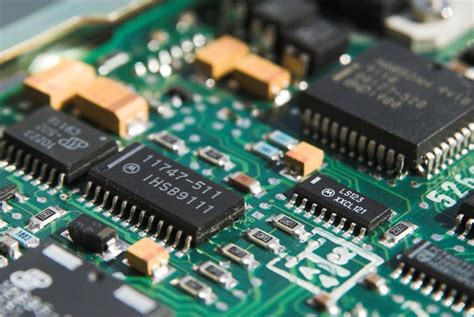
Comparing Ceramic PCB Thermal Conductivity With Other Materials
Ceramic printed circuit boards (PCBs) have gained significant attention in recent years due to their superior thermal conductivity properties compared to traditional materials. As electronic devices become more compact and powerful, efficient heat dissipation becomes crucial to maintain performance and reliability. Understanding how ceramic PCBs compare with other materials in terms of thermal conductivity is essential for engineers and designers seeking optimal solutions for thermal management.
To begin with, thermal conductivity is a material’s ability to conduct heat.
It is measured in watts per meter-kelvin (W/m·K). Materials with high thermal conductivity can effectively transfer heat away from heat-generating components, thereby preventing overheating and potential damage. Ceramic PCBs, typically made from materials such as aluminum oxide (Al2O3) or aluminum nitride (AlN), exhibit thermal conductivities ranging from 20 to 200 W/m·K. This range is significantly higher than that of traditional FR-4 PCBs, which have a thermal conductivity of approximately 0.3 W/m·K. The stark contrast highlights the advantage of ceramic PCBs in applications where efficient heat dissipation is critical.
In comparison, metals such as copper and aluminum are also known for their high thermal conductivities, with values of approximately 400 W/m·K and 237 W/m·K, respectively.
While these metals surpass ceramics in thermal conductivity, they are not typically used as standalone PCB materials due to their electrical conductivity, which can lead to short circuits. Instead, they are often used as heat sinks or in combination with other materials to enhance thermal management. Ceramic PCBs, on the other hand, offer a unique combination of high thermal conductivity and electrical insulation, making them ideal for high-power and high-frequency applications.
Furthermore, when comparing ceramic PCBs to other advanced materials like metal-core PCBs (MCPCBs), which incorporate a metal core to improve heat dissipation, ceramics still hold a distinct advantage.
MCPCBs generally have thermal conductivities ranging from 1 to 10 W/m·K, depending on the specific design and materials used. While they offer better thermal performance than FR-4, they do not match the capabilities of ceramic PCBs. This makes ceramics particularly suitable for applications such as LED lighting, power electronics, and automotive electronics, where efficient thermal management is paramount.
Additionally, the mechanical properties of ceramic materials contribute to their appeal.
Ceramics are inherently rigid and resistant to thermal expansion, which ensures dimensional stability under varying temperatures. This characteristic is particularly beneficial in environments subject to thermal cycling, where materials expand and contract with temperature changes. In contrast, materials with lower thermal stability may experience warping or mechanical failure over time.
In conclusion, ceramic PCBs offer a compelling solution for thermal management in electronic applications, outperforming traditional FR-4 and even advanced materials like MCPCBs in terms of thermal conductivity. While metals like copper and aluminum exhibit higher thermal conductivities, their electrical properties limit their use as PCB materials. The unique combination of high thermal conductivity, electrical insulation, and mechanical stability makes ceramic PCBs an attractive choice for engineers and designers aiming to enhance the performance and reliability of electronic devices. As technology continues to evolve, the demand for efficient thermal management solutions will likely drive further innovation and adoption of ceramic PCBs in various industries.
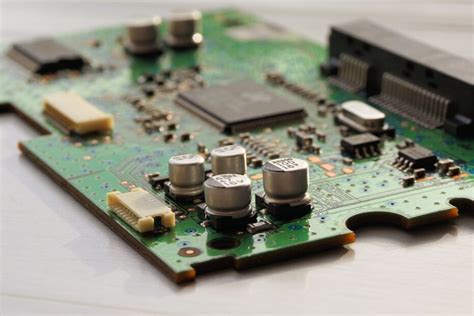
Innovations In Enhancing Ceramic PCB Thermal Conductivity
Ceramic printed circuit boards (PCBs) have emerged as a pivotal component in the electronics industry, particularly in applications demanding high thermal conductivity and reliability. As electronic devices become increasingly compact and powerful, the need for efficient heat dissipation has never been more critical. Ceramic PCBs, known for their superior thermal management properties, are at the forefront of this technological evolution. The innovations in enhancing ceramic PCB thermal conductivity are driven by the necessity to meet the rigorous demands of modern electronic applications.
One of the primary reasons ceramic PCBs are favored in high-performance applications is their inherent thermal conductivity.
Unlike traditional FR-4 boards, ceramic substrates such as aluminum oxide (Al2O3), aluminum nitride (AlN), and beryllium oxide (BeO) offer significantly higher thermal conductivity. This property is crucial in applications where heat dissipation is paramount, such as in LED lighting, power electronics, and RF modules. The ability of ceramic materials to efficiently transfer heat away from critical components helps in maintaining optimal operating temperatures, thereby enhancing the performance and longevity of electronic devices.
Recent innovations have focused on further improving the thermal conductivity of ceramic PCBs.
One approach involves the development of advanced ceramic materials with enhanced thermal properties. For instance, aluminum nitride is increasingly being used due to its excellent thermal conductivity and electrical insulation properties. Researchers are also exploring the incorporation of novel materials, such as silicon carbide and boron nitride, which promise even higher thermal performance. These materials are engineered to provide a balance between thermal conductivity, mechanical strength, and cost-effectiveness, making them suitable for a wide range of applications.
In addition to material advancements, manufacturing techniques have also seen significant improvements.
The use of thin-film deposition and laser processing technologies allows for the precise fabrication of ceramic PCBs with optimized thermal pathways. These techniques enable the creation of intricate circuit patterns and the integration of thermal vias, which enhance heat dissipation. Moreover, the development of multilayer ceramic PCBs has opened new avenues for thermal management. By stacking multiple layers of ceramic substrates, manufacturers can achieve higher thermal conductivity while maintaining a compact form factor.
Furthermore, the integration of thermal interface materials (TIMs) with ceramic PCBs has been a focal point of innovation.
TIMs are used to fill the microscopic air gaps between the ceramic substrate and the heat-generating components, thereby improving thermal contact and reducing thermal resistance. Advances in TIM technology, such as the use of phase-change materials and graphene-based composites, have significantly contributed to the overall thermal performance of ceramic PCBs.
As the demand for high-performance electronic devices continues to grow, the importance of efficient thermal management cannot be overstated. The ongoing innovations in enhancing ceramic PCB thermal conductivity are crucial in addressing the challenges posed by increased power densities and miniaturization. By leveraging advanced materials, manufacturing techniques, and thermal interface solutions, the electronics industry is poised to meet the thermal management needs of the future. These advancements not only ensure the reliability and efficiency of electronic devices but also pave the way for new applications and technologies that were previously unattainable

